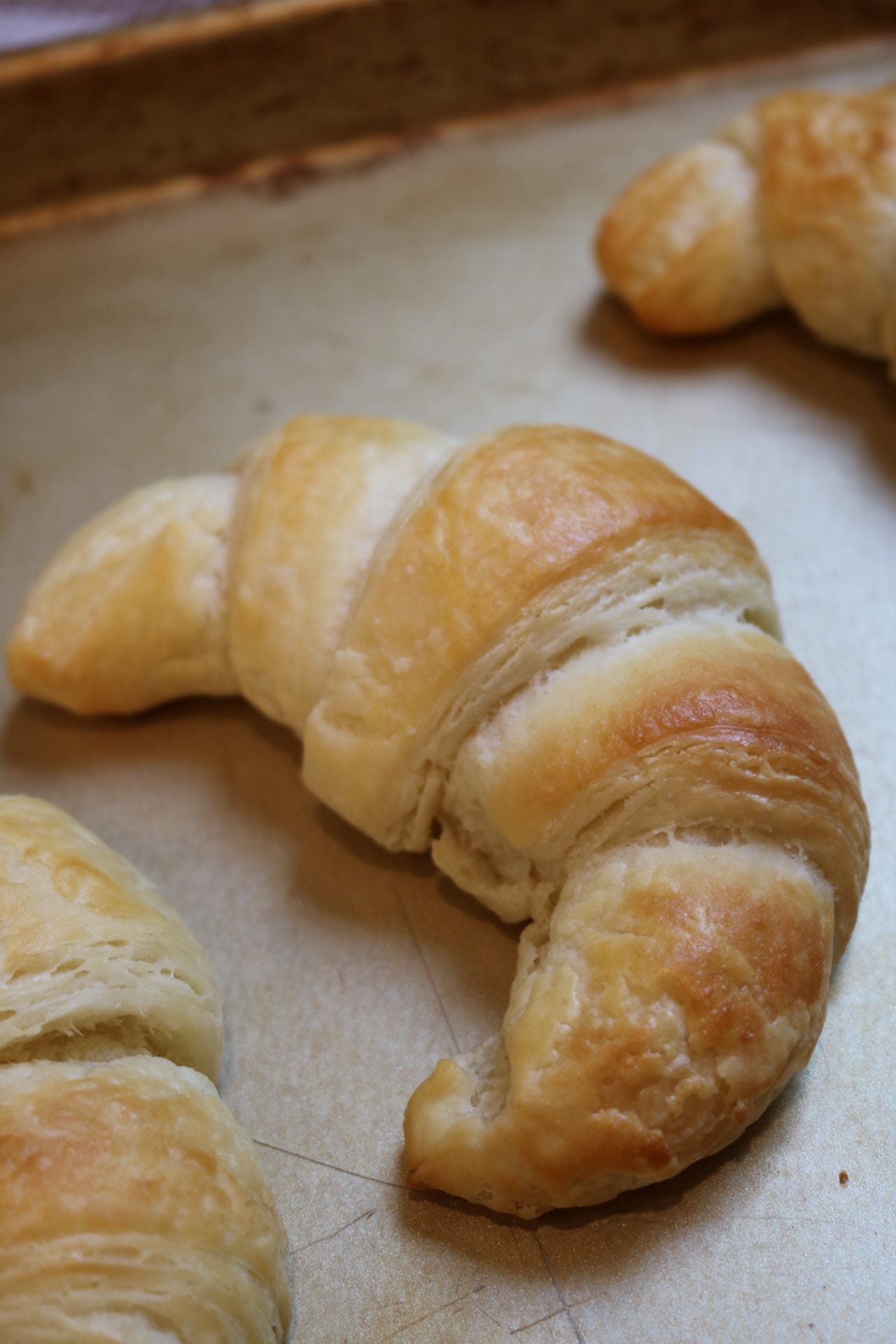Making croissants has been at the top of my baking bucket list for as long as I can remember.
But each time I start doing the research, I’d be put off by the time and effort it takes for a potential — and very likely — lackluster result. As more time passed, the more intimidating it would get. Croissants aren’t expensive to buy or hard to find, so why take three days to make them?
This week I stopped making excuses and took the challenge head-on.
Sally McKenney of “Sally’s Baking Addiction" was the first recipe to pop up with a quick Google search of “how to make croissants.” I printed off the five pages and 19 steps and got started on the dough Monday evening.
Day one
I’ll be honest — there were some tears involved. I opted for active dry yeast which usually needs some sort of liquid to be activated. I thought the milk in the dough would hydrate the little yeast pearls but after kneading and resting the dough for 15 minutes in the refrigerator, I knew something was wrong. The yeast was still visible and the dough felt tight.
With great dramatics and in the emotion of the moment, I threw the dough in the garbage and raced to the grocery store to pick up instant yeast before it closed in 20 minutes (‘raced’ is a figure of speech and I promise speeding wasn’t involved).
The second batch of dough immediately looked and felt much better as it came together in the stand mixer. After a 30-minute rest in the refrigerator, I rolled and shaped the dough into a precise 14x10-inch rectangle and returned it to chill overnight.
At this point I was feeling accomplished of a successful dough, but wary of what lay ahead of me. It was too early to tell what my croissant fate had in store.
Day two
I lifted out the butter to soften for what become a whipped and flattened rectangular sheet. After the butter sheet chilled for 30 minutes the scariest part of the recipe began — lamination. Lamination is the process of folding and rolling butter into dough repeatedly to create flaky thin layers. This is the trademark texture of any good croissant.
Once prepared, I placed the cold sheet of butter horizontally on the dough and attempted to fold each end over it. I say ‘attempted’ because my dough was very stuck on the parchment. After a few deep breaths and with floured hands, I managed to evenly seal the butter layer in and only lost a few globs of sticky dough.
I made sure to douse the counter and dough with a healthy amount of flour to prevent any additional sticking and it was time to do the first of three folds. I got an arm workout from rolling the layers into a 10x20-inch rectangle. A ruler I used in elementary school was involved.
The ‘fold’ is a lengthwise motion into thirds, as if you’re folding a letter. Once the first one was complete, I turned the short end towards me and started rolling again to repeat the process. After the second fold, the buttery dough warmed up and needed to be chilled for 30 minutes before the third and final fold.
I was getting into a groove and feeling better about my odds. I felt like this moment was a turning point — I could look back at everything I had accomplished with ease and be excited by the final outcome.
Day two-and-a-half
After yet another rest in the refrigerator — this time for four hours — my (triple!) laminated dough was ready to be shaped into its final form. I got my trusty ruler out once more and made an 8x20-inch rectangle to be cut into 16 even pieces. I gently stretched each segment of dough — careful not to disturb the layers I created — into long triangles which, miraculously, rolled into croissants. A quick room temperature rise of an hour and my croissants were back in the refrigerator overnight.
Side note: I think I’d be much better at doing this the second time around, knowing what to expect and seeing how the shapes take form when baked in the oven. My perfectionist self is telling me I could have smoothed and tucked the edges more cleanly.
Day three
I woke up Wednesday morning more energized and ready to take on the day than I had been in weeks. Knowing I had something (hopefully) spectacular ready to be baked, was enough.
A 22-minute bake at 400℉ and I had what I’d been waiting for: homemade croissants!!! The accumulation of years of unnecessary stress and avoidance. My time was not wasted. Every hour was worth the single-second experience of biting into a freshly baked, warm croissant.
Here’s what I learned
Use instant yeast.
Flour your surfaces well.
A few simple ingredients can create magic.
Would I do it again?
100% yes. I surprised myself this week. There is so much satisfaction in completing a hands-on task versus one that involves a screen. I feel more confident as a baker, and, honestly, as a human. Sometimes things occupy too much space in our minds than they’re worth. In this case I had built up how difficult making croissants from scratch would be, to a point that was doing myself a disservice. I’m glad I pushed through the doubt and came out the other side, with 16 crescents of laminated, buttery and delicious dough.








Amazing ! Sounds very stressful ….cant wait to try one